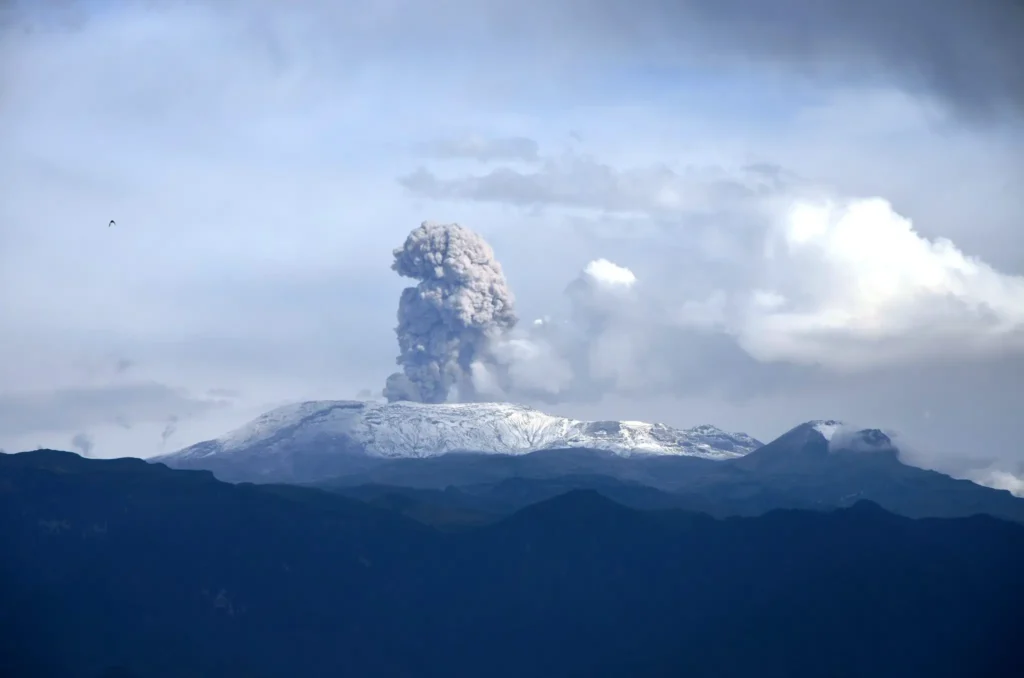French photographer, Frank Fournier, took the harrowing photograph of Omayra Sánchez, often referred to as the “world’s saddest photograph”. The 13 year old girl was stuck in volcanic mud, unable to move but the photographer didn’t try to help her.
In 1985, the volcanic eruption of Nevado del Ruiz in Colombia caused massive mudslides and marked the country’s most devastating natural disaster. Dormant for 69 years, the volcano erupted aggressively causing massive destruction and engulfing the whole town of Armero. Thousands were killed in the unfortunate event marking a black day in history.
Before the eruption, scientists had detected signs of increased activity and had warned the government to evacuate the area. Despite being warned two months prior to the incident, communication failures and government inaction left the town unprepared.

When the series of explosive eruptions began, they caused pyroclastic flows (fast-moving currents of hot gas and volcanic material) down the volcano’s slopes.
The melting of significant portions of the mountain’s glacial ice cap, combined with volcano debris, caused lahars to form. Lahars, composed of water, rock, and ash, are rapidly flowing mudslides.
Racing with a speed of 30 mph, lahars grew larger and more destructive, destroying the town of Armero, which lied directly in the path of these mudflows.
Within hours of the eruption, Armero was buried under several meters of mud and debris, killing approximately 20,000 of its residents out of 29,000 total.
The massive scale destruction has left the internet feeling emotional and devastated. Rescuers described the chaotic situation of finding survivors even more heartbreaking. One rescuer recalled, “It was like a war zone. The cries for help came from every direction, but there was so little we could do”
Another said, “We knew the volcano was active, but no one believed it would erupt. The warnings were too late”
Amidst the destruction and cries for help, a 13-year-old girl named Omayra Sánchez Garzó was seen trapped in the volcanic mud, helpless and devastated. Her legs were pinned under concrete and the remains of her home, including the body of her aunt.
The volcanic debris had made a tight vice around her lower body that it was impossible to take her out. She was unable to move being drowned in the mud from neck down.

Firefighters, volunteers, and many others tried to dig and set the 13-year-old free. They even tried to move her aunt away but the little girl was just stuck in her position.
Reports suggested there were conversations of potentially amputating her legs but they didn’t have facilities to set her free even that way.

The rescue team sat with the little girl that stayed trapped for 3 days. The French photojournalist was also one of them that kept the girl accompanied. He took the photo of Omayra which became “the image of disaster”, drawing attention towards the disaster and serving as a stark reminder of governmental failures.
The photojournalist, Fournier, told the BBC, “She had been there for almost three days. Dawn was just breaking and the poor girl was in pain and very confused.”

Part of the haunting nature of the picture, taken by Fournier, is the black eyes of Omayras, which might have been caused due to the pressure of her legs being trapped, that too in cold water. Many criticized Fournier for taking a picture, rather than helping the poor girl out.
Responding to the backlash, he explained,
“There was an outcry – debates on television on the nature of the photojournalist, how much he or she is a vulture. But I felt the story was important for me to report and I was happier that there was some reaction; it would have been worse if people had not cared about it.”
He added, “I am very clear about what I do and how I do it, and I try to do my job with as much honesty and integrity as possible.”

